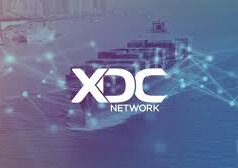If you’re into crypto, you’ve probably heard of Starknet, the Layer-2 (L2) blockchain that’s been turning heads with its zero-knowledge (ZK) tech. Built to supercharge Ethereum’s scalability, Starknet is now eyeing Bitcoin, aiming to bridge the two biggest blockchains in a way that could reshape decentralized finance (DeFi), gaming, and more. From massive transaction speeds to developer-friendly tools, Starknet’s making bold moves in 2025. So, what’s the deal with this ZK-Rollup powerhouse? Let’s break it down and see why Starknet’s stealing the crypto spotlight.
The Starknet Blueprint: What Makes It Tick?
Starknet is a permissionless, decentralized ZK-Rollup that sits atop Ethereum, designed to process thousands of transactions off-chain while settling them on Ethereum’s mainnet with a single, cryptographically secure proof. This setup slashes gas fees and boosts transaction speeds without skimping on Ethereum’s bulletproof security. Powered by STARK (Scalable, Transparent ARgument of Knowledge) proofs, Starknet handles complex computations off-chain, sending only a lightweight proof to Ethereum for verification. The result? Near-instant transactions, dirt-cheap fees, and scalability that lets developers build wild, complex dApps.
The secret sauce is Cairo, Starknet’s native programming language. Since hitting Ethereum Mainnet in June 2020, Cairo’s made coding, reviewing, and maintaining smart contracts a breeze. It lets developers deploy any business logic, from DeFi protocols to NFT marketplaces, with flexibility that rivals Ethereum’s but at a fraction of the cost. Add in native Account Abstraction—where accounts are smart contracts, not rigid protocol rules—and you’ve got a playground for user-friendly, customizable dApps.
Speeding Up the Game: Starknet’s Performance Leap
Starknet’s not just talk—it’s delivering. The Bolt upgrade in August 2024 pushed Starknet’s theoretical transaction-per-second (TPS) capacity to new heights, and by September, it hit 503 TPS on Mainnet, blowing past expectations. That’s a big deal when Ethereum’s mainnet chugs along at 15-30 TPS. By batching transactions into a single STARK proof, Starknet slashes the computational load on Ethereum, making it a go-to for high-throughput apps like gaming and DeFi.
This speed comes with security. STARK proofs are quantum-resistant and trustless, meaning no third-party middleman can mess with the system. The decentralized network of Sequencers and Provers ensures censorship resistance, while anyone can verify the chain’s integrity with minimal hardware. Imagine running a full node on your laptop—Starknet makes it possible.
Bitcoin Ambitions: Starknet’s Dual-Chain Vision
Here’s where things get spicy: Starknet’s not stopping at Ethereum. In March 2025, StarkWare, the brains behind Starknet, announced plans to make Starknet the first L2 to settle on both Ethereum and Bitcoin. The goal? Scale Bitcoin to serve 1 billion users, bringing DeFi, staking, and yield farming to the world’s largest cryptocurrency. This hinges on OP_CAT, a proposed Bitcoin upgrade that’d enable native bridging. StarkWare’s pushing hard, partnering with sCrypt for a proof-of-concept bridge and launching a $1M OP_CAT fund to fuel research. The first grantee, LimeChainHQ, is exploring token trading on Bitcoin—a hint of what’s possible.
Speculation alert: if OP_CAT activates, Starknet could unlock Bitcoin’s untapped potential. Right now, Bitcoin’s mostly for HODLing or simple trades, but Starknet’s smart contract functionality could bring complex apps to the network. Picture Bitcoin-based DeFi or NFT markets, all with Starknet’s low fees and instant confirmations. The Xverse wallet integration, announced in 2025, already lets Bitcoin holders interact with Starknet, and Braavos wallet users can pay with STRK via Bitcoin’s Lightning Network. If this takes off, Starknet could unify Ethereum and Bitcoin ecosystems, creating a supercharged L2 hub.
Developer Love: Cairo, EVM, and Community Growth
Starknet’s developer ecosystem is exploding. The Cairo language lets coders push boundaries, and the upcoming dual-VM support (set for Q4 2024 but likely live by now) lets Solidity developers deploy Ethereum-compatible dApps without learning Cairo. This EVM-Cairo combo makes Starknet a one-stop shop for builders, from DeFi to gaming. The Dojo gaming ecosystem doubled its projects in two months by September 2024, and hackathons like Re{ignite} and the Starknet Winter Hackathon are onboarding devs like crazy.
The Starknet Foundation’s grant hub is another win, funding projects and offering resources like the Developer Basecamp, a six-week bootcamp turning newbies into Cairo pros. Events like ETHCC and ETHDenver keep the community buzzing, while tools like Raiko—a ZK Bitcoin client—show Starknet’s commitment to innovation. With wallets like Argent, Kraken, and Bitget supporting STRK, onboarding is smoother than ever.
Staking and Governance: Empowering the Community
Starknet’s STRK token isn’t just for fees—it’s the backbone of governance and staking. In October 2024, STRK holders got their first governance vote, greenlighting Staking Phase 2, which likely rolled out by now. Staking boosts network resilience and decentralization, letting users lock STRK to secure the chain and earn rewards. Governance votes let the community shape Starknet’s future, from protocol upgrades to policy tweaks.
The 2024 airdrop of 700 million STRK to 1.3 million users was a masterclass in community building. Eligible users needed five transactions over three months, worth $100+, showing Starknet rewards active participation. Speculation: we might see another airdrop in 2025 to keep the hype alive, especially if Bitcoin integration ramps up.
Challenges and Speculation: Can Starknet Stay Ahead?
Starknet’s not perfect. The ZKX protocol’s shutdown in July 2024, due to low user engagement, shows not every project thrives. The zkLend exploit in February 2024, though resolved with a recovery portal, highlights security risks. Plus, competition’s fierce—other L2s like Arbitrum and Optimism are vying for Ethereum’s scaling crown.
Still, Starknet’s got an edge. Its low-cost transactions, EVM compatibility, and Bitcoin ambitions set it apart. If OP_CAT fails, though, the Bitcoin plan could stall, forcing Starknet to double down on Ethereum. Speculatively, Starknet might explore cross-chain bridges to other L1s like Solana or BNB Chain to diversify. For now, its $216.26 million market cap (based on TOSHI’s cap as a proxy for ecosystem tokens) and growing dApp ecosystem suggest it’s on solid ground.
The Big Picture: Starknet’s Path to Crypto Dominance
Starknet’s rewriting the L2 playbook. With 503 TPS, Cairo’s flexibility, and a bold Bitcoin-Ethereum bridge, it’s positioning itself as a scalability beast. The community’s thriving—hackathons, grants, and wallets are pulling in devs and users alike. Whether it’s DeFi, NFTs, or Bitcoin-powered apps, Starknet’s tech can handle it. The real test? Sustaining growth amid competition and delivering on its dual-chain dream. For now, it’s a safe bet for developers and investors watching crypto’s next big thing. What do you think—will Starknet rule L2, or is it overhyped? Drop your thoughts below and let’s keep the convo going!
Sources:
- starkware.co
- starknet.io
- coinmarketcap.com
- crypto.news
- thebigwhale.io




























Absolutely loved this piece! Starknet’s focus on ZK-powered scaling is so forward-thinking, especially with quantum-resistant STARKs
Does that integrate with Bitcoin’s Layer 1?
Starknet’s recent partnership with Alchemy Pay, announced in early 2025, enables fiat-to-crypto on-ramps directly on their network.